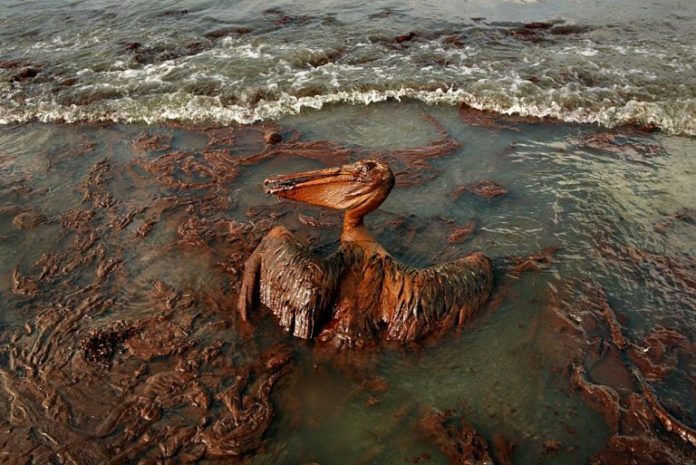
Devastating oil, gas, and nuclear spills received little mainstream media coverage throughout the year, but made 2016 a rough year for the environment all the same.
Even though study after study confirms that we are essentially the midst of a mass extinction event, you wouldn’t know it from what is published in the typical newspaper or what is shown on television. The environment is in crisis as disaster after disaster, many of them man-made, have destroyed and contaminated sizeable portions of the planet. In 2016, some horrendous man-made disasters took place and deserve to be recognized as ignorance of such travesties condemn us to repeat them.
Nuclear Power Plant Leaks – NY, WA, & FL, USA
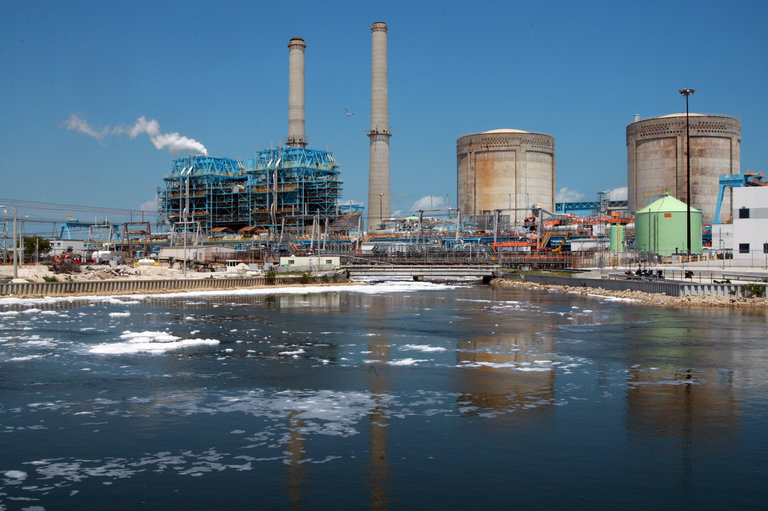
After the Fukushima disaster, you’d think that we would be more aware of the dangers of unstable nuclear plant infrastructure. However, this past year, not one but three nuclear power plants in the US had major leaks, which were hardly covered at all by the corporate media. The first of these to occur took place at the Indian Point nuclear power plant in New York when a groundwater leak contaminated three monitoring wells where radioactivity increased by “nearly 65,000 percent.” Though officials downplayed the impact of the radioactive contamination of groundwater and its effects on nearby drinking water supplies, Indian Point – over the course of this year – experienced nine technical problems this year, four of which forced the entire plant to shut down. There is no question that this facility is dangerous.
Just a few months later came the next nuclear leak – this time on the other side of the country. In March, approximately 3,500 gallons of radioactive waste leaked from the Hanford Nuclear Reservation, the most polluted nuclear weapons production site in the country. Despite the admission that the massive leak had taken place, the Washington Department of Ecology insisted that “there is no no indication of waste leaking into the environment or risk to the public at this time.” However, the EPA to registered a spike in radiation nearby soon after the leak, proving this false. The vapors given off by the radioactive waste also sickened at least 20 workers soon after the leak, causing an evacuation of the site and work stoppage in April. The federal government has repeatedly rejected Washington state requests to clean up the site, citing “high costs.”
At roughly the same time as the Hanford leak, a government-sponsored University of Miami study found that the nearby Turkey Point Nuclear Generating Station has been leaking radioactive materials into the protected waters of Biscayne Bay for years. The study found high levels of radioactive isotopes present in the bay and the isotopes were found to have originated in the plant’s cooling canals. The leaks had raised the bay’s radioactivity levels to 215 times higher than that normally found in seawater. Not only that, but the leaked radioactivity was found to be making its ways towards wells that supply drinking water to millions of Florida residents. The plant’s cooling canals have been a danger since 2013 when the plant sought to increase power output, causing dangerous increases in water temperatures inside the canals. Despite that, official nuclear regulators gave the plant permission to let cooling canal temperatures reach 104 degrees – the highest allowed in any nuclear facility in the country.
PetroPeru’s Four Oil Spills – Amazon River Basin, Peru

Arguably the largest man-made environmental catastrophe of the year were the four massive oil spills caused by Peru’s largest oil company PetroPeru. All three directly polluted the Amazon river basin, one of the most important ecological structures on Earth. The first two took place in late January, with the third following just a week later. As a result, in less than a month, 3,000 barrels of crude oil polluted two Amazon tributaries that over 8,000 indigenous people relied on for water and food. After the spills were detected, heavy rains prevented PetroPeru from initially containing the damage as oil burst through containment walls and quickly spread throughout local watersheds. The final spill of the year for PetroPeru took place in June with about 477 barrels released. One of the major causes for the spills was the advanced age of the infrastructure. One of the pipelines that caused the spill is over 40 years old, another over half a century.
Yet, PetroPeru decided to add insult to injury by illegally hiring impoverished indigenous children and teenagers to clean-up the spill. The children were given “about a dollar [per bucket] by company officials,” according to BBC correspondent Wyre Davies. Working without protective gear, many children fell gravely ill trying to clean up the spill near their homes. “They fell ill with fever and diarrhea after being sent to the river,” the father of a seven-year-old boy told BBC. His son was hospitalized as a result. Other children and youth who participated suffered similar ill effects and even severe skin burns.
Air Pollution – Asia
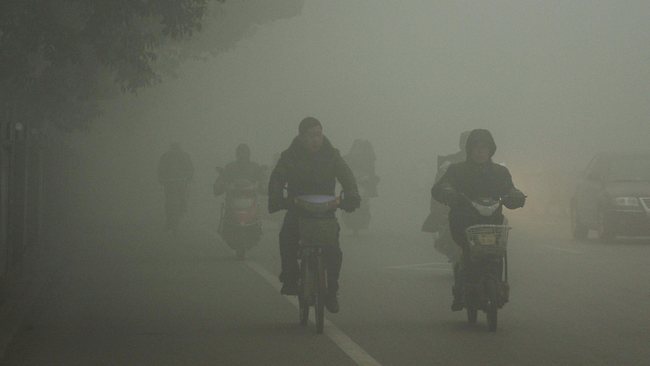
By all indications, 2016 was the year where air pollution in parts of the developing world was so bad that it has now become, not just a major environmental crisis, but an unprecedented health crisis. UNICEF announced earlier this year that air pollution is now the cause of death for an estimated 600,000 children every year. The issue has become so unbearable that factories in affected countries are forced to close for weeks at a time to try and let the industrial smog dissipate, though it often has a minimal effect. The worst air pollution in the world can be found throughout the world, though it has spiraled out of control in several Asian countries. In Pakistan, air pollution is so out of control that 60,000 Pakistanis died last year due to the high level of pollutants in the air. However, that pales in comparison to China, who has the world’s deadliest outdoor air pollution, where more than 1 million have died from dirty air since 2012. In India, an estimated 600,000 have died in that same time frame.
Devastating Red Tide Outbreaks – The Island of Chiloé, Chile
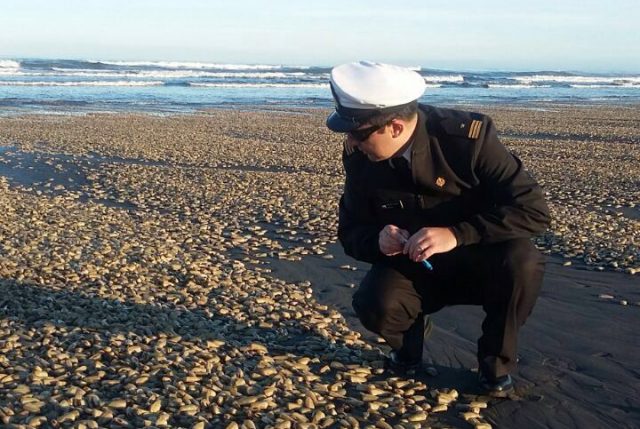
In March of this year, the island of Chiloé in Southern Chile fell victim to the worst case of “red tide” in the nation’s history. Though the red tide phenomena are normally associated with tropical areas, Chiloé, closer to Antarctica than the equator, saw a red tide bloom that rivals those normally seen in Florida. As a result of the toxic bloom, 20 million fish were killed, all but destroying the once thriving fishing industry which nearly the entire community depends upon economically. Not only that but red tide – actually a form of algae – produces potent neurotoxins that also endangered Chiloé’s nearly 18 million inhabitants, particularly those living in coastal areas. Worst of all, this crisis was completely preventable. Only a few months prior, industrial salmon farmers, run by foreign corporations, dumped thousands of tons of dead salmon off the coast of the island. As red tide is scientifically proven to worsen in the presence of excess nitrogen, of which salmon and fish, in general, are an abundant source, this was undeniably a disaster caused by the negligence of Chile’s massive industrial salmon industry, one of the largest in the world.
Oil and gas leaks – US
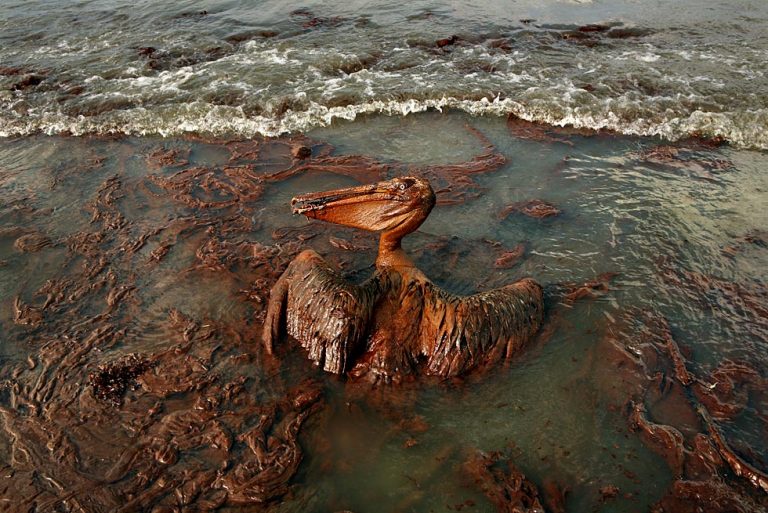
For the US, 2016 was the year were major pipeline spills broke records. By the end of November, 354 total “hazardous liquid” pipeline spills had taken place in the US, according to the Pipeline and Hazardous Materials Safety Administration (PHMSA). This is significantly worse than years prior, especially considering that 16% of leaks spilled more than 100 barrels of either oil, gas, or fracking wastewater. In September, a portion of the Colonial pipeline in Alabama fractured, spilling more than 336,000 gallons of refined gasoline into the surrounding environment. Another gasoline leak took place just a month later, this time in Pennsylvania, where 55,000 gallons of gasoline spilled into a tributary of a river that supplies water to six million people.
Then there were the oil spills. In September, a pipeline managed by Sunoco logistics – the same company set to oversee the controversial Dakota Access pipeline – spilled 800 barrels of crude oil just outside the town of Sweetwater, Texas. However, the worst spill of all took place months prior in May when Shell Oil Co spilled 2,100 barrels of oil into the Gulf of Mexico, suffering minimal consequences. The Gulf of Mexico has suffered unbelievable amounts of damage as 147 spills have leaked 516,900 gallons oil since 2012. That’s not even counting the disastrous effects of the 2010 BP oil spill, where an oil well leaked massive amounts of oil continuously for 87 days. If this trend is any indication, the whole country could be out of clean, uncontaminated water sooner rather than later.
What are your thoughts? Please comment below and share this news!
This article (Worst Man-Made Disasters Of 2016 You’ve Probably Never Heard Of) is free and open source. You have permission to republish this article under a Creative Commons license with attribution to the author and True Activist





Companies responsible for environmental disasters should be HEAVELY fined by a “world court” They get away with murder, while the rest of us must pay taxes.
That’s OK. The masses would rather complain about being butthurt over fried chicken on black awareness day. The media will never cover these type of issues until politicians and spec interests stop paying or threatening them.
The media doesn’t cover these disasters because of money and fear. The media relies on big money for advertising and follow the money to stock holders as well. I live in the Florida Gulf Coast area and the crap that BP pulled is so full of crap. It is believed that the well is still leaking to this day just not as bad. Our state even wanted to keep the media squashed due to tourism and again money. Our waters and food are so messed up that by the time people start believing it is real will be way too late. God help us because what I see for my grandchildren future is not pretty at all. Massive population deaths and war and only those surviving will be scarce. It’s funny how Sci fi movies are almost a predictor. Denial will be our death.